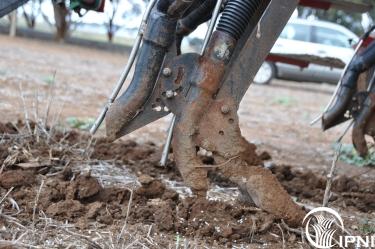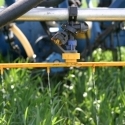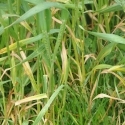03 Apr 2018
Seed and Fertilizer Compatability
Rate, row spacing, crop, soil and product interact
 Separate seed and fertilizer banding equipment
Separate seed and fertilizer banding equipment
2018 has had a dry lead in to seeding, and seed damage from in-furrow fertilizer is more likely under these conditions. Growers will need to take care if seed and fertilizer is placed in the same drill row - the potential for damage is affected by soil type, moisture, fertilizer type, row width, type of tool, and seed species.
To help understand the risk, the seed damage calculator was developed by Dr RH Geldermann, from Plant Science Department of South Dakota State University, with assistance from the South Dakota Cooperative Extension Service and the International Plant Nutrition Institute. First released as a spreadsheet in 2008, it was re-released in 2010 as a web-based calculator and has now been redesigned in 2016. The tool enables an estimate to be made of the potential safe rates for fertilizers to be placed in-furrow with different seeds. The potential damage is worse with high salt, very acid and high N fertilizers, with light textured and dry soils, with wide rows and minimum disturbance.
Outputs are given in terms of maximum rates of fertilizers per hectare or per acre, as well as per kg or lb of nutrient. Just make sure you select the "metric units" from the first of the drop-down lists.
Rates are indicative only.
This tool does not consider situations where fertilizer and seed are passed through separate chutes and placed in different and spaced rows. In general, separation of 2.5 cm is usually adequate to reduce the risk of damage to emerging crop seed.
To use the calculator go to http://seed-damage-calculator.herokuapp.com
There is more information at the link at left.




